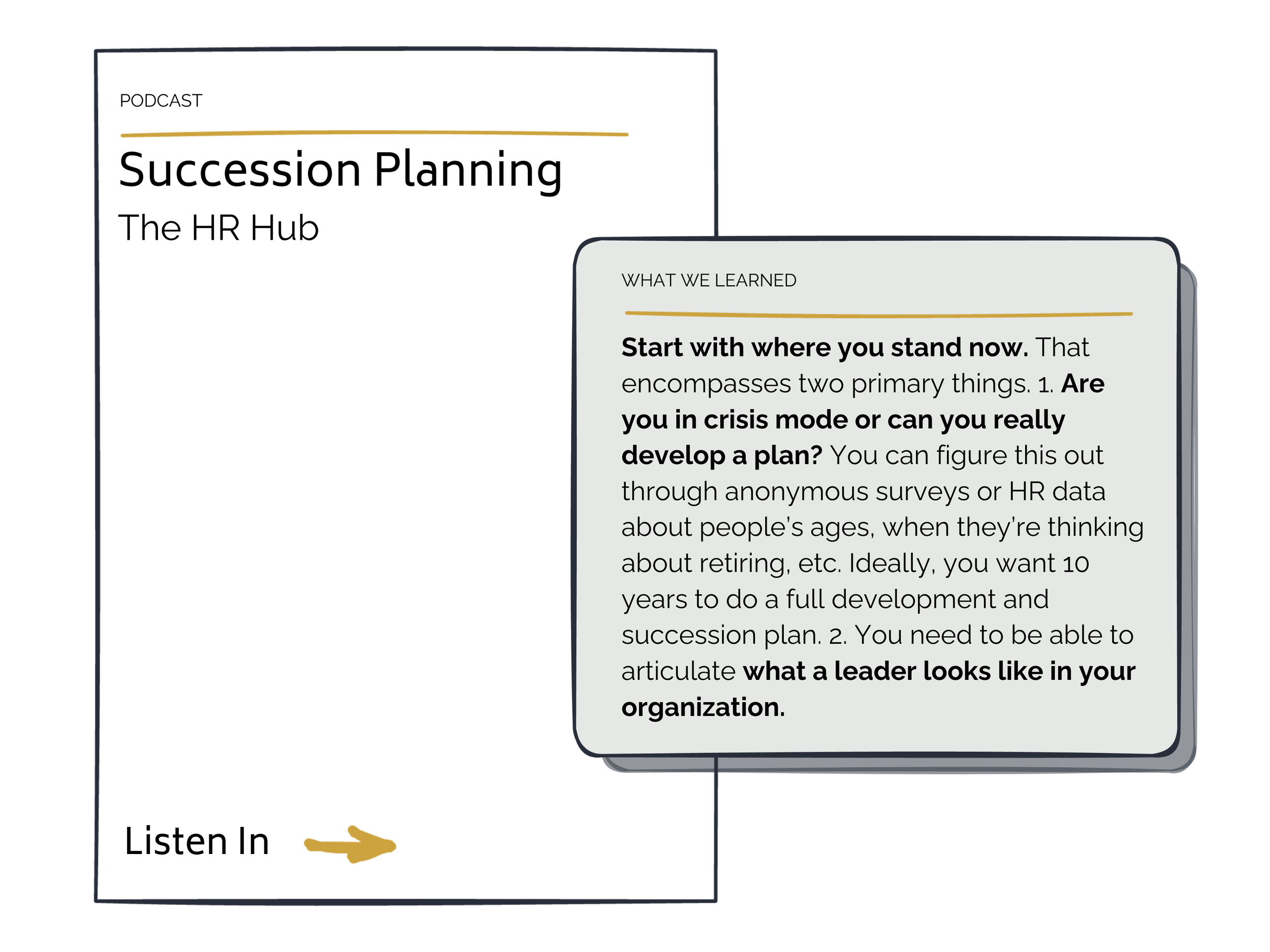Q011
Who needs
A succession plan?
our take .
While key person risk is most commonly associated with the role of CEO, that doesn’t mean other individuals are not seemingly irreplaceable in practice. Tim, our CIO, would tell you that everyone should be working to make themselves obsolete. But, and especially for those who are not CEO, doing so requires a trust and discipline that many will not volunteer (or document).
Run through the call tree for a variety of situations and identify who would get the call, when, and why. For instance, why does the lead engineer get called every time there’s a quality control issue? Why does the semi-retired manager have to provide access codes for new hires? Why is there only one estimator?
Bottlenecks oftentimes represent key person risks. But then comes the hard work of figuring out why no one else has been successfully trained to back that person up, and whether that person is willing to document their work and train others.
The CEO and/or board is ill-equipped to appreciate each role’s nuances, and ideally needs to establish both the expectation and trust for someone to lead their own charge on becoming replaceable. And that’s where culture becomes particularly critical. Would your employees trust you?
on paper.
character to consider: Spiro Agnew
Don’t skimp on the risk assessment
1973. Washington D.C. Amid turbulence and scandal, Vice President Spiro Agnew resigns. His sudden departure, fueled by allegations of bribery and tax evasion (under the general storm of public sentiment and the specific tornado of the Watergate scandal) threw the Nixon administration into chaos at a time when they could have used any bit of stability they could muster. Agnew’s rise was more about political calculus than a careful evaluation of his fitness for high office – and was noted at the time. As a successor Agnew was a rocky choice. In this case, Agnew’s track record as Maryland governor – including financial improprieties – should have flagged him as a high-risk individual requiring careful contingency planning. And so as a successor, Agnew himself needed a backup.
Replacements for the replacement
At the time, the United States had no Vice President after Agnew left office, and the 25th Amendment’s process for appointing a replacement highlighted how critical it is to plan for unanticipated vacancies. We finally got to Gerald Ford, but that was a process fraught with uncertainty. Granted, there was a process – via the 25th Amendment, which allows the President to nominate a Vice President with congressional approval. But even with a process to follow, the process wasn’t easy – congressional scrutiny, public anxiety, and overall uncertainty reigned. In any organization, succession plans for key roles should extend beyond the primary successor to include secondary and even tertiary candidates. Vet your backups, back up your backups, and plan for worst case scenarios for any key position.
Works consulted:
For God So Loves Spiro Agnew That He Made Him Vice-President
We welcome your questions, feedback, and suggestions as series installments are released. Our emails are:
Subscribe to receive new installments in the series.
The information, opinions, and views presented in this publication are provided solely for general informational and educational purposes. They should not be interpreted or considered as legal, tax, financial, or other forms of professional advice. All information, opinions, and views expressed herein are of a general nature and have not been tailored to address the specific circumstances or needs of any individual or entity. As such, they do not constitute a comprehensive or complete statement of the matters discussed. Readers should consult with their own legal, tax, financial, or other professional advisors regarding the applicability of this information to their own circumstances.
This publication may include links to third-party websites and provide access to other third-party content, such as articles, news reports, company information, or other materials (collectively, “Third-Party Content”). These links and resources are provided solely for your convenience and general informational purposes. Permanent Equity Management, LLC (“Permanent Equity”) does not endorse, approve, certify, or guarantee the accuracy, completeness, or timeliness of any third-party websites or Third-Party Content, nor does Permanent Equity imply any affiliation, partnership, or endorsement between us and the owners/operators of any third-party websites or the providers/creators of any Third-Party Content. Permanent Equity has no control over third-party websites or their content and disclaims any responsibility for their accuracy, security, privacy policies, or the quality of any products or services offered through them. Accessing third-party websites or relying on Third-Party Content is done entirely at your own risk. Permanent Equity is not liable for any damages, losses, or liabilities arising from your use of, access to, or reliance on third-party websites or any Third-Party Content. Any transactions, decisions, or actions made based on third-party websites or Third-Party Content are solely between you and the respective third party.
The information provided in this publication does not constitute investment advice, nor does it represent an offer to sell or solicit the purchase of interests in Permanent Equity or any private fund it advises. It is not intended for marketing purposes to existing or prospective investors in any jurisdiction and may be subject to correction, modification, or supplementation without prior notice. Permanent Equity provides investment advisory services only to the privately offered funds it advises and does not solicit or make its services available to the public or other advisory clients.









